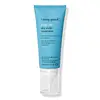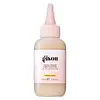What's inside
What's inside
 Key Ingredients
Key Ingredients

 Benefits
Benefits

 Concerns
Concerns

 Ingredients Side-by-side
Ingredients Side-by-side

Water
Skin ConditioningGlycerin
HumectantNiacinamide
SmoothingSodium Hyaluronate
HumectantTrehalose
HumectantUrea
BufferingSerine
MaskingAlgin
MaskingPentylene Glycol
Skin ConditioningPullulan
Lecithin
EmollientGlyceryl Polyacrylate
C13-15 Alkane
SolventCaprylyl Glycol
EmollientDisodium Phosphate
BufferingPotassium Phosphate
BufferingHydroxyethyl Acrylate/Sodium Acryloyldimethyl Taurate Copolymer
Emulsion StabilisingHydroxyacetophenone
AntioxidantCaesalpinia Spinosa Gum
Skin ConditioningSclerotium Gum
Emulsion StabilisingXanthan Gum
EmulsifyingIsohexadecane
EmollientEthylhexylglycerin
Skin ConditioningPolysorbate 60
EmulsifyingParfum
MaskingEthyl Linalool
MaskingMethyldihydrojasmonate
MaskingAmyl Salicylate
PerfumingCitronellyl Acetate
MaskingPentadecalactone
MaskingDipropylene Glycol
HumectantIonone
AstringentTetramethyl Acetyloctahydronaphthalenes
MaskingWater, Glycerin, Niacinamide, Sodium Hyaluronate, Trehalose, Urea, Serine, Algin, Pentylene Glycol, Pullulan, Lecithin, Glyceryl Polyacrylate, C13-15 Alkane, Caprylyl Glycol, Disodium Phosphate, Potassium Phosphate, Hydroxyethyl Acrylate/Sodium Acryloyldimethyl Taurate Copolymer, Hydroxyacetophenone, Caesalpinia Spinosa Gum, Sclerotium Gum, Xanthan Gum, Isohexadecane, Ethylhexylglycerin, Polysorbate 60, Parfum, Ethyl Linalool, Methyldihydrojasmonate, Amyl Salicylate, Citronellyl Acetate, Pentadecalactone, Dipropylene Glycol, Ionone, Tetramethyl Acetyloctahydronaphthalenes
Water
Skin ConditioningOctyldodecanol
EmollientCaprylic/Capric Triglyceride
MaskingEctoin
Skin ConditioningMel
EmollientPropolis Cera
AntiseborrhoeicGlycerin
HumectantXylitol
HumectantLactitol
HumectantHydrolyzed Rice Protein
Skin ConditioningRibes Nigrum Seed Oil
EmollientVitis Vinifera Seed Oil
EmollientCarthamus Tinctorius Seed Oil
MaskingHelianthus Annuus Seed Oil
EmollientRosa Rubiginosa Seed Oil
EmollientOenothera Biennis Oil
EmollientSphingomonas Ferment Extract
Skin ConditioningTocopherol
AntioxidantCardiospermum Halicacabum Flower/Leaf/Vine Extract
Skin ConditioningCalendula Officinalis Flower Extract
MaskingRosmarinus Officinalis Leaf Extract
AntimicrobialApium Graveolens Seed Extract
AntioxidantCitrus Aurantium Bergamia Fruit Extract
Skin ConditioningDaucus Carota Sativa Root Extract
Skin ConditioningHelianthus Annuus Seed Oil Unsaponifiables
EmollientCitric Acid
BufferingCaramel
Cosmetic ColorantSodium Benzoate
MaskingSodium Gluconate
Skin ConditioningSodium Levulinate
Skin ConditioningSodium Anisate
AntimicrobialPotassium Sorbate
PreservativeParfum
MaskingHexyl Cinnamal
PerfumingCoumarin
PerfumingLinalool
PerfumingLimonene
PerfumingWater, Octyldodecanol, Caprylic/Capric Triglyceride, Ectoin, Mel, Propolis Cera, Glycerin, Xylitol, Lactitol, Hydrolyzed Rice Protein, Ribes Nigrum Seed Oil, Vitis Vinifera Seed Oil, Carthamus Tinctorius Seed Oil, Helianthus Annuus Seed Oil, Rosa Rubiginosa Seed Oil, Oenothera Biennis Oil, Sphingomonas Ferment Extract, Tocopherol, Cardiospermum Halicacabum Flower/Leaf/Vine Extract, Calendula Officinalis Flower Extract, Rosmarinus Officinalis Leaf Extract, Apium Graveolens Seed Extract, Citrus Aurantium Bergamia Fruit Extract, Daucus Carota Sativa Root Extract, Helianthus Annuus Seed Oil Unsaponifiables, Citric Acid, Caramel, Sodium Benzoate, Sodium Gluconate, Sodium Levulinate, Sodium Anisate, Potassium Sorbate, Parfum, Hexyl Cinnamal, Coumarin, Linalool, Limonene
 Reviews
Reviews

Ingredients Explained
These ingredients are found in both products.
Ingredients higher up in an ingredient list are typically present in a larger amount.
Glycerin is already naturally found in your skin. It helps moisturize and protect your skin.
A study from 2016 found glycerin to be more effective as a humectant than AHAs and hyaluronic acid.
As a humectant, it helps the skin stay hydrated by pulling moisture to your skin. The low molecular weight of glycerin allows it to pull moisture into the deeper layers of your skin.
Hydrated skin improves your skin barrier; Your skin barrier helps protect against irritants and bacteria.
Glycerin has also been found to have antimicrobial and antiviral properties. Due to these properties, glycerin is often used in wound and burn treatments.
In cosmetics, glycerin is usually derived from plants such as soybean or palm. However, it can also be sourced from animals, such as tallow or animal fat.
This ingredient is organic, colorless, odorless, and non-toxic.
Glycerin is the name for this ingredient in American English. British English uses Glycerol/Glycerine.
Learn more about GlycerinParfum is a catch-all term for an ingredient or more that is used to give a scent to products.
Also called "fragrance", this ingredient can be a blend of hundreds of chemicals or plant oils. This means every product with "fragrance" or "parfum" in the ingredients list is a different mixture.
For instance, Habanolide is a proprietary trade name for a specific aroma chemical. When used as a fragrance ingredient in cosmetics, most aroma chemicals fall under the broad labeling category of “FRAGRANCE” or “PARFUM” according to EU and US regulations.
The term 'parfum' or 'fragrance' is not regulated in many countries. In many cases, it is up to the brand to define this term.
For instance, many brands choose to label themselves as "fragrance-free" because they are not using synthetic fragrances. However, their products may still contain ingredients such as essential oils that are considered a fragrance by INCI standards.
One example is Calendula flower extract. Calendula is an essential oil that still imparts a scent or 'fragrance'.
Depending on the blend, the ingredients in the mixture can cause allergies and sensitivities on the skin. Some ingredients that are known EU allergens include linalool and citronellol.
Parfum can also be used to mask or cover an unpleasant scent.
The bottom line is: not all fragrances/parfum/ingredients are created equally. If you are worried about fragrances, we recommend taking a closer look at an ingredient. And of course, we always recommend speaking with a professional.
Learn more about ParfumWater. It's the most common cosmetic ingredient of all. You'll usually see it at the top of ingredient lists, meaning that it makes up the largest part of the product.
So why is it so popular? Water most often acts as a solvent - this means that it helps dissolve other ingredients into the formulation.
You'll also recognize water as that liquid we all need to stay alive. If you see this, drink a glass of water. Stay hydrated!
Learn more about Water